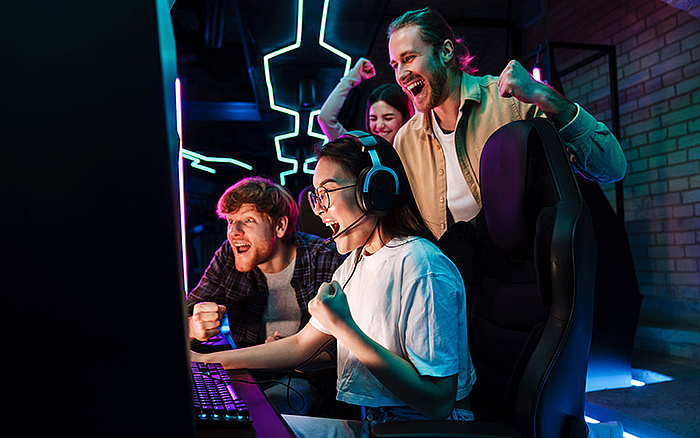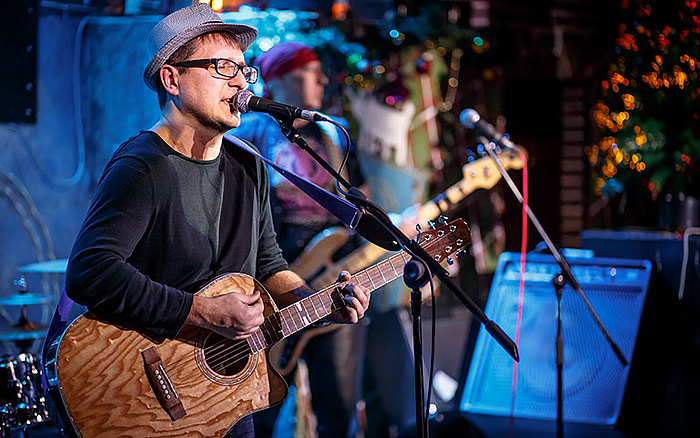
Patent whiffs, name tiffs and deepfake tricks: a fragrant IP mix
The Intellectual Property (IP) scene is never static. Every month brings a breath of fresh air in the form of intriguing news stories to unpack and puzzle over. Our latest roundup features potentially pungent patents, the trials of software, a generational trademark clash and one possible defense against the invasion of the voice snatchers.
Innovation is an uphill trek: patenting a scent
Gamers smell... everything from coffee in the morning to freshly baked cookies and, occasionally, grass. But now Sony wants players to smell victory, too. Recently published World Intellectual Property Organization (WIPO) patents describe an odor-generating device and its cartridges for products as diverse as "automobiles, head-mounted displays, relaxation products such as neck pillows and eye pillows." Be that as it may, the technology perhaps most strongly lends itself to entertainment equipment.
Though the idea of tickling the olfactory sense to complement theater, film and television is far from new, the concept has not caught a whiff of success in more than a century. Cinema entrepreneurs consistently resurrect the gimmick every few decades, seeming once the funk of past rejections has been aired out.
The fad is particularly redolent of the 1950s, a decade that introduced filmgoers to Charles Weiss' AromaRama process and Smell-O-Vision from Hans Laube. But sniffing out a shamefaced source for scented cinema takes us back even further. Laube's system, for one, was based on technology he exhibited at the 1939 World's Fair in New York. It is even possible that the "smellies" predated the "talkies," per a report by Variety that floral perfumes were introduced into a New York theater to accompany the 1916 short "Story of the Flowers." Who made the claim? The appropriately named Joe La Rose.
Nevertheless, Sony appears undeterred by this overripe history and is giving sensory immersion another blast. While video games, their displays and inputs are not explicitly mentioned in the patent descriptions (perhaps from an abundance of caution), the circular shape of the odorous module certainly implies integration into a game controller.

Some things are best shared while others are not. Winners may come out smelling of roses, but a bitter defeat might leave a bad taste in more than the vanquished foe's mouth. Confining odors to the intended party – or no one at all – is a challenge yet to be overcome.
And from one Japanese entertainment company to another, Nintendo was also in the air this month for a veritable cloud of patent filings concerning video game experiences. The application strategy in the United States may be over-optimistic given the country's high and somewhat obscure patentability threshold for software.
The Supreme Court decision in Alice Corp. vs. CLS Bank International (2014) held that "merely requiring generic computer implementation fails to transform that abstract idea into a patent-eligible invention." To this day, the ruling remains notorious not for any controversy of judgment but for its failure to bring clarity to the mounting issue of software patent eligibility in the United States.
That being the case, Nintendo's applications cite Japanese filings as their priorities. Crucially, Japan's IP legislation statutorily recognizes software patents in contrast to the European system, where computer programs are not regarded as inventions on their face, and U.S. case law, which disfavors "abstract ideas."
Perhaps application US2023233938A1 from Nintendo sums up this complex experience best: "[...] an NPC [non-playable character] displayed on the diary screen emits an induction comment. Responding to this, a player sticks a sticker. Moreover, the NPC emits a reaction comment responding to the pasted sticker. That is, the player performs an exchange with the NPC according to an inducement.
Nintendo and Sony may get their stickers and stinkers yet – or foul emissions could result.
A tale of two Kylies
When you hear the name Kylie, the next word that comes to mind might reveal something about your generation. Unfortunately for those at the United States Patent and Trademark Office (USPTO), trademark examiners cannot rely on off-the-cuff associations to reach their decisions.
Kylie Minogue and Kylie Jenner are set to tussle for pop-culture supremacy, or more accurately, priority. Last month, Jenner filed three "Kylie" wordmark applications at the USPTO, relating to downloadable software, printed media and jewelry.
But this is not the first time the eponymous trademark registrants have clashed over the likelihood of confusion. On April 1, 2015, Jenner filed a similar wordmark to signify advertising services. This prompted Minogue to oppose the application on grounds of priority, confusion and dilution by blurring and tarnishment. The proceedings were terminated in 2017 following an out-of-court settlement, and the two went on to establish separate makeup brands: "Kylie Cosmetics" for Jenner that same year and "Kylie" for Minogue in 2019.

When image is everything, defending personal brands with registered trademarks is essential. However, the inevitable overlap of names in celebrity culture often leads to trademark turf wars where prior use and exposure decide who gets the top spot.
Since then, Minogue has emphasized that the opposition was purely business and that there was no animosity between the famous Kylies. "I've spent a lifetime, you know, protecting my brand and building my brand, so it was just something that had to be done," Minogue shared on "Watch What Happens Live" in 2022. "But let me also say," she hastened to add after pointing out the obligation to defend her IP, "we came to an agreement."
Though the details of that arrangement have never been disclosed, they are unlikely to concern these latest trademark filings. Perhaps Minogue just cannot get Jenner out of her head after all.
Changing the tempo: If you can't beat them...
In April of this year, we examined the contention surrounding AI-generated sound-a-likes. When "Heart On My Sleeve" appeared on streaming services using audio "deepfakes" of musicians Drake and The Weeknd, Universal Music Group (UMG) was among the most vocal critics.
The offending song was swiftly removed from most platforms under the legal weight of the world's largest music production corporation. But such was UMG's indignation that Jeffrey Harleston, General Counsel and Executive Vice President of Business and Legal Affairs, testified before the U.S. Senate on the matter. Speaking at the Senate Judiciary Committee's subcommittee on Intellectual Property on July 12, Harleston opined that: "An artist's voice is often the most valuable part of their livelihood and public persona, and to steal it, no matter the means, is wrong."

Writing about the proliferation of recording devices, German music critic Hans Stuckenschmidt remarked in 1926 that "the machine is neither a god nor a devil." Today's wave of digital innovation is perhaps best viewed through the same lens.
However, the gears of legislation usually turn very slowly. This might explain why, according to unnamed sources, UMG is trying to anticipate AI's disruption of the music industry through active measures as well as advocacy.
The Financial Times reported on August 8 that four people "familiar with the matter" had confirmed that UMG is seeking its own remedy to the IP threat. These sources claimed that the company was in talks with Google to develop a tool that would allow members of the public to create songs legitimately using AI voice clones. In essence, users would pay to license the IP rights from the publisher, in turn compensating those singers who signed up for the scheme. It is important to note that the licenses would need to involve more than copyrights since these rights do not subsist intrinsically in a person's voice. A vital element would be a recognition of personality rights, sometimes called rights of publicity, as this IP concerns an individual's unique identifying characteristics.
In that light, it is ironic that the informers remain anonymous, one of whom asserted that Warner Music was also negotiating with Google to deliver a similar product. As of yet, none of the three companies has offered an official statement on the leaked information.
Will licensing perfectly attuned voices let the genius or the genie out of the bottle? We shall soon see (and hear).
Filed in

Japanese video game companies clash over patents, Google comes under fire for trademark infringement and a German court sets AI copyright precedent.



